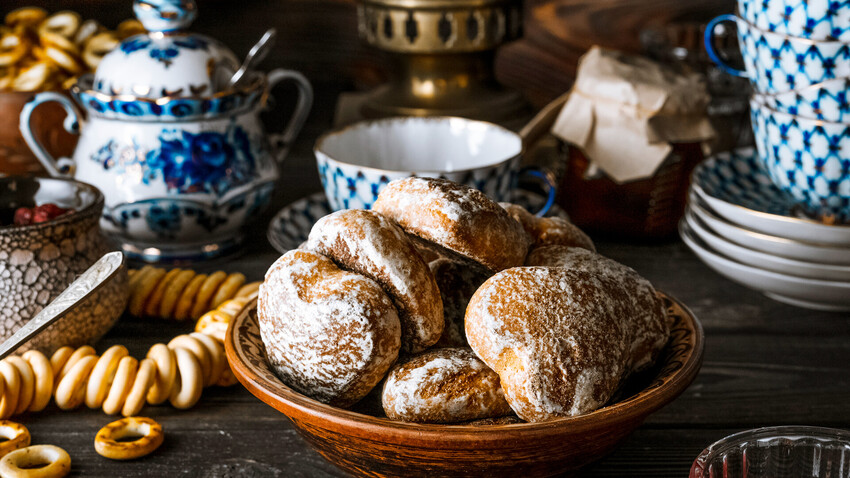
Gingerbread – a delectable gift for any occasion.
Legion MediaGingerbread has been made in Russia for more than a 1000 years. Initially, it was made from rye flour, a large amount of honey (up to 50%) and berry juice. Thick flatbreads were formed from the dough and baked in the oven. This is how “honey bread” was made – the Russian gingerbread prototype.
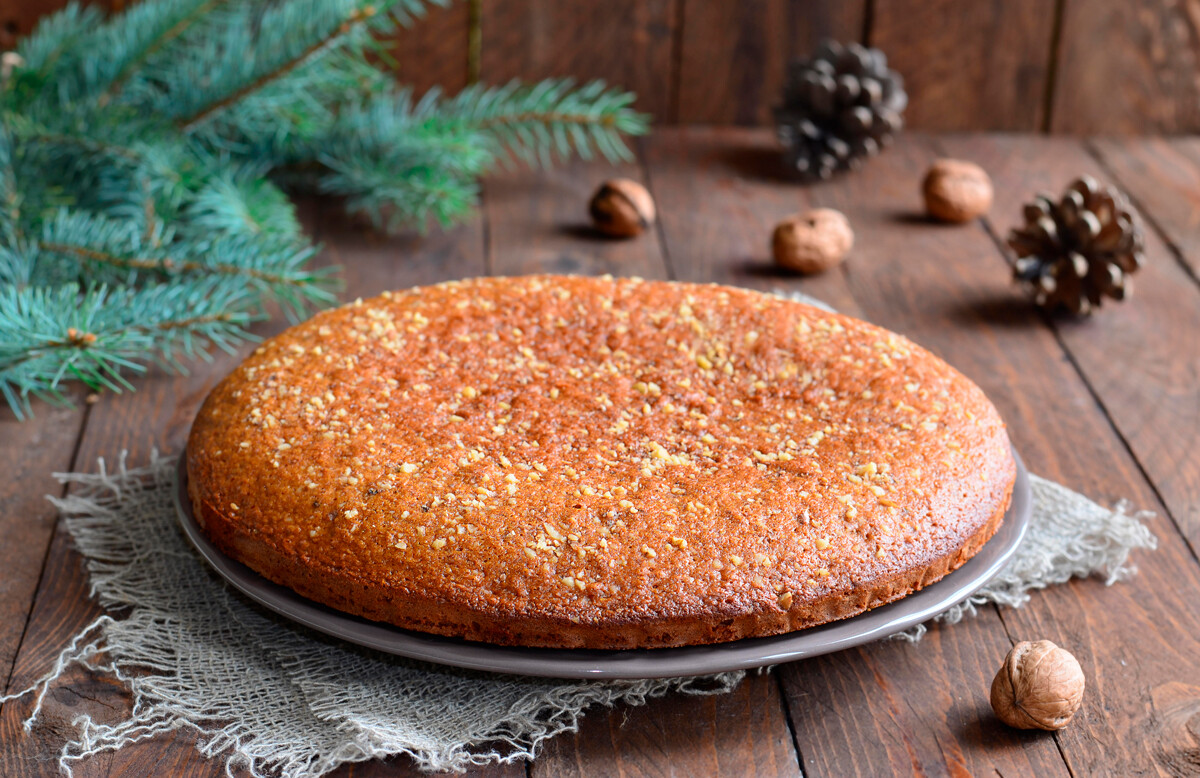
This soft and full-flavored honey kovrizhka with sweet filling is a must for any Christmas table.
Legion MediaOver the following centuries the “honey bread” turned into kovrizhka – its surface featuring patterns that marked a holiday, an important event or some place. For example, there are surviving texts of a big kovrizhka with the coat of arms of Muscovy, baked on the occasion of the birth of future emperor Peter the Great at the end of the 17th century. It’s quite likely that not just honey but also spices were added to kovrizhka. They were imported into the country from India or the Near East. However, they were very expensive and available only to the wealthy.
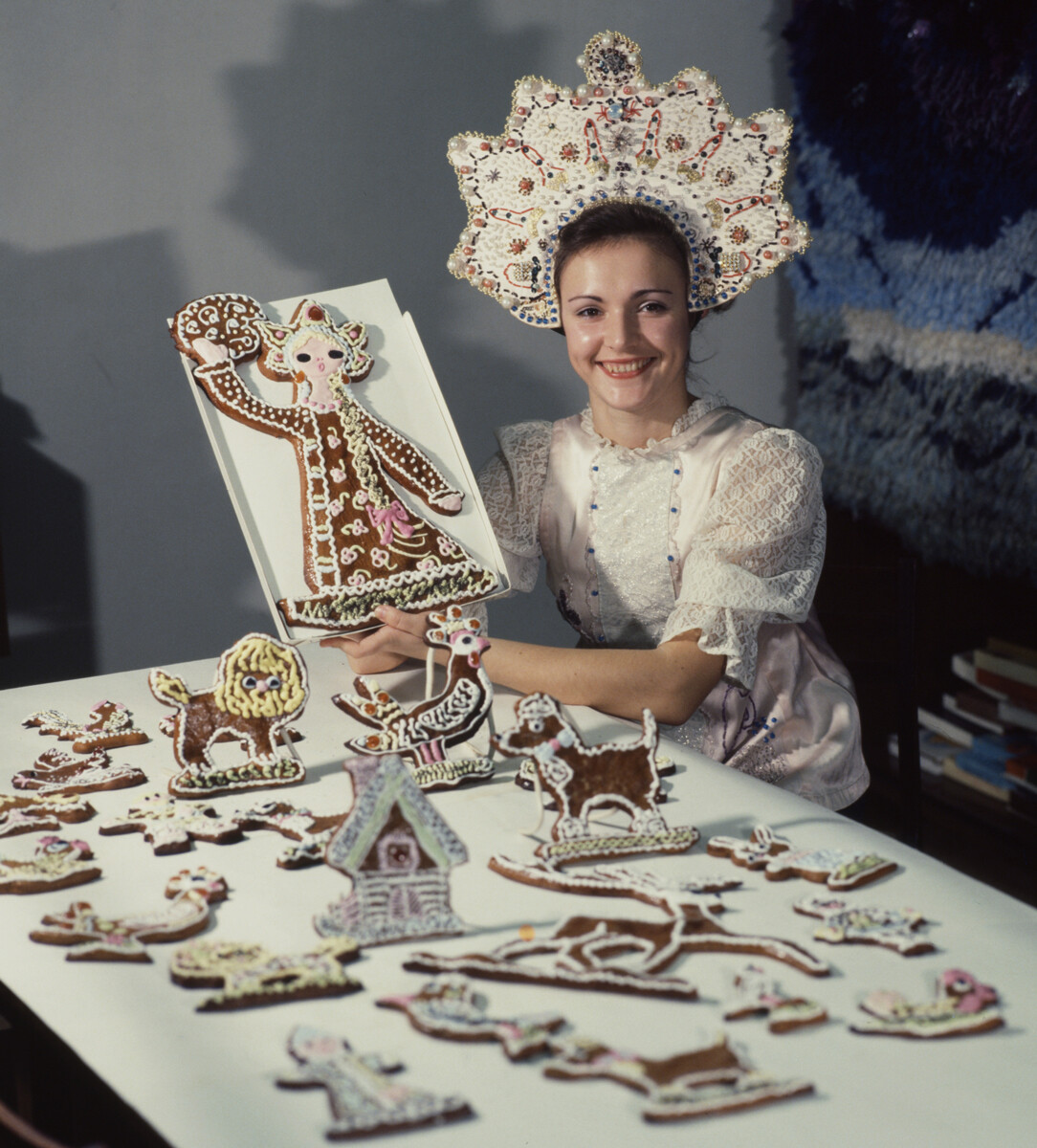
Elena Menshikova from Arkhangelsk shows pryaniki kozuli.
S. Gubsky/TASSBy the 18th century, spices became more commonplace and cheaper in price, and started to appear in the culinary recipes for the masses, including recipes for gingerbread. This was a time when the production of gingerbread flourished in Russia, (gingerbread in Russian is pryanik, which derives from the Russian word pryanosti, meaning “spices”).
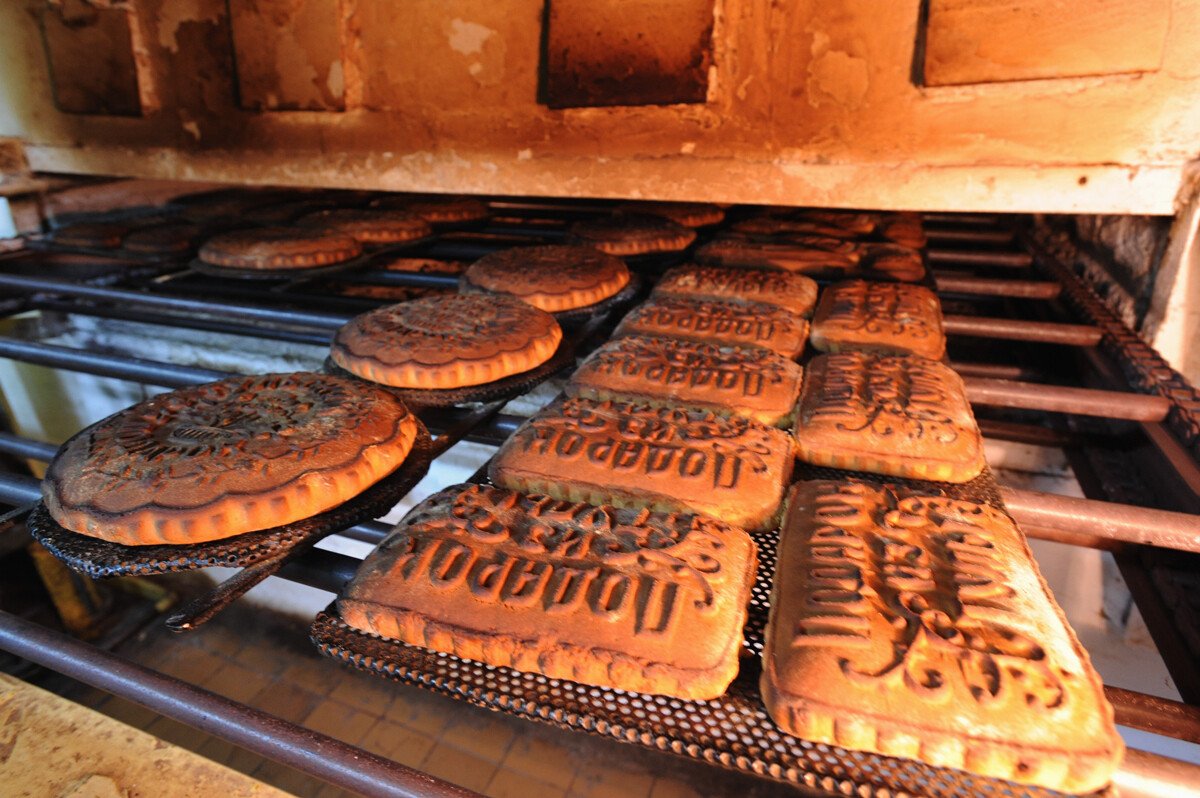
Tula pryaniki.
Sergei Pyatakov/SputnikIn the preparation of Russian gingerbread, according to the research of culinary historian William Pokhlyobkin, people used cinnamon, cloves, cardamom, lemon peel, Jamaican pepper, nutmeg, star anise, mint, anise and ginger. As the list shows, ginger’s role was far from prevalent.
Famous Soviet author and confectioner Robert Kengis in the culinary book, The Preparation of Cakes, Pastry, Cookies, Gingerbread and Pies at Home (1959), wrote that the more honey you add to the gingerbread dough, the less spices you’ll need to use.
“Pryanik without honey has to be flavored significantly more. For the mix of spices, take 35% coriander, 30% cinnamon, 10% cardamom, 10% nutmeg and 5% each of cloves, star anise and allspice. You can alter the spice ratio to suit your taste. For the aroma and flavor you can also add 1/2 cup of peeled roasted chopped nuts, peanuts or almonds, candied fruit, lemon or orange peel and 5-10 grams of vanilla sugar.”
In the case of Russian pryanik or gingerbread, ginger doesn’t play the role of the main coloring substance. If pryanik is made by using rye flour and dark buckwheat honey, the dough will turn out dark anyway.
If it is made without honey, with sugar and light flour varieties, Kengis advised to add burnt sugar to the dough, and color it this way until lightly brown.
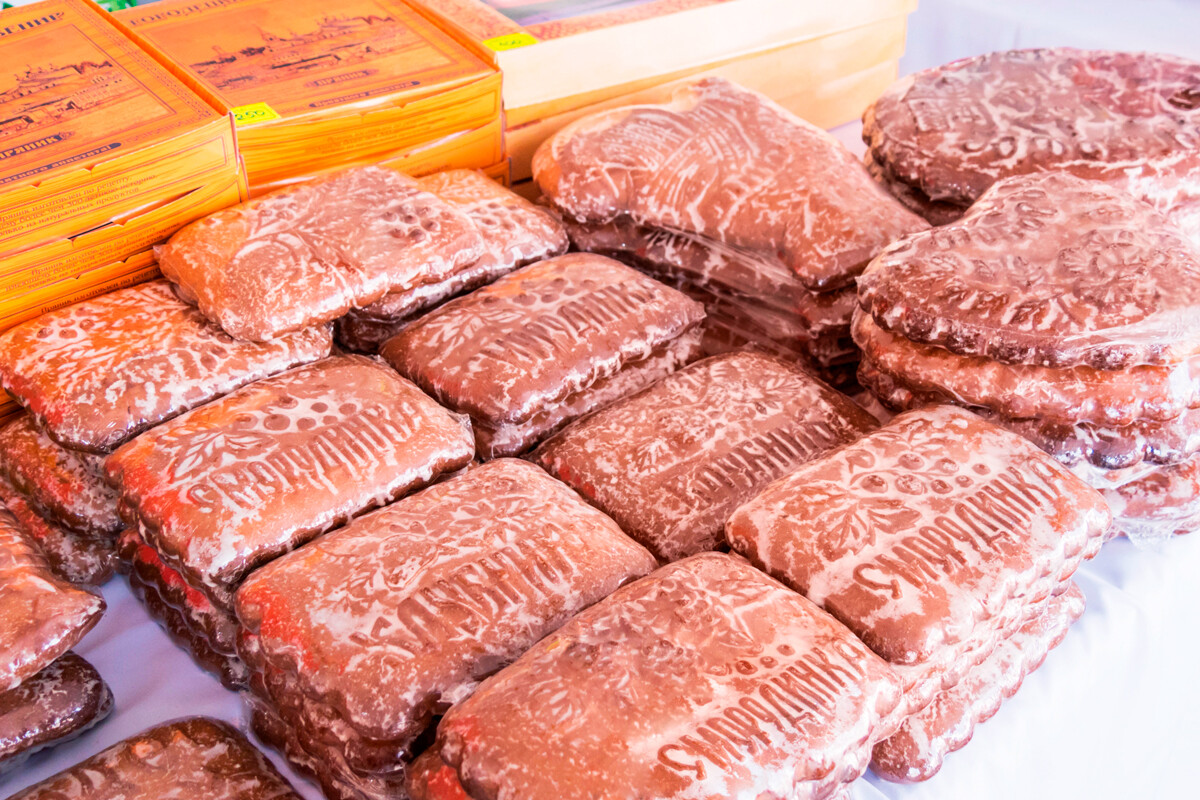
Tula pryaniki.
Legion MediaRussian gingerbread recipes vary, depending on the region. The most famous and popular ones are made in Tula (check out the recipe for Tula pryanik). They’re baked in gingerbread board molds from honey-sugar dough with thick jam for the filling. The filling can vary, but the most common is apple jam. You can also find fillings made from blackcurrants, cranberries, condensed milk, nuts and more. On top, the pryanik is decorated with inscriptions and patterns, and also covered with glazing; such gingerbread is called “printed.”
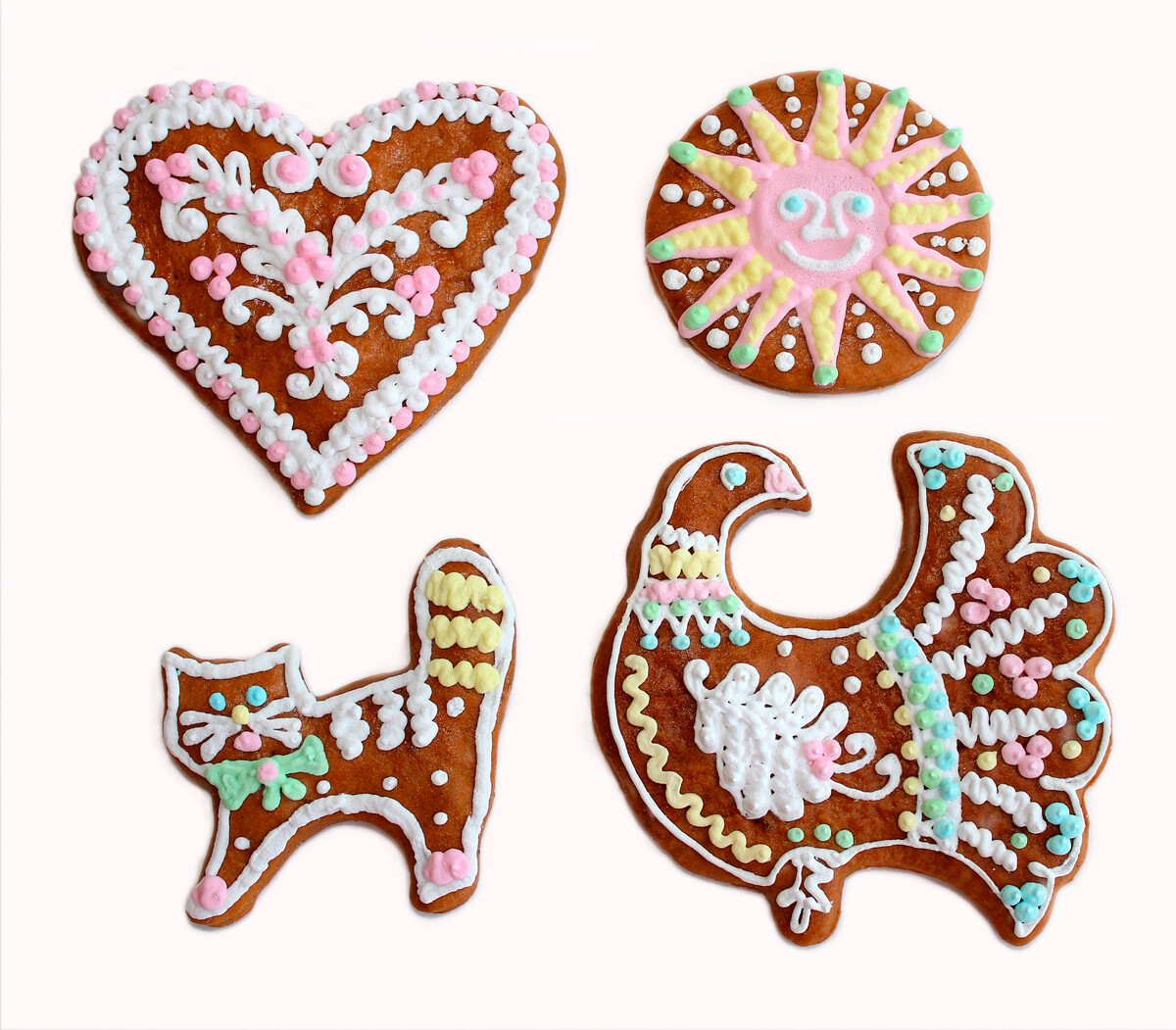
Pryaniki kozuli.
Legion MediaA different version of this dessert has existed in the Russian North for several centuries – kozuli, shaped as different animals. They became especially popular at the beginning of the 19th century when a sugar factory was built in Arkhangelsk. Confectioners eagerly used the remaining syrup, which was cheaper than sugar, to give gingerbread its brown color and sweet taste. As for spices, cinnamon and cloves were usually added to the kozuli dough.
Dear readers,
Our website and social media accounts are under threat of being restricted or banned, due to the current circumstances. So, to keep up with our latest content, simply do the following:
Subscribe to our Telegram channels: Russia Beyond and The Russian Kitchen
Subscribe to our weekly email newsletter
Enable push notifications on our website
Install a VPN service on your computer and/or phone to have access to our website, even if it is blocked in your country
If using any of Russia Beyond's content, partly or in full, always provide an active hyperlink to the original material.
Subscribe
to our newsletter!
Get the week's best stories straight to your inbox